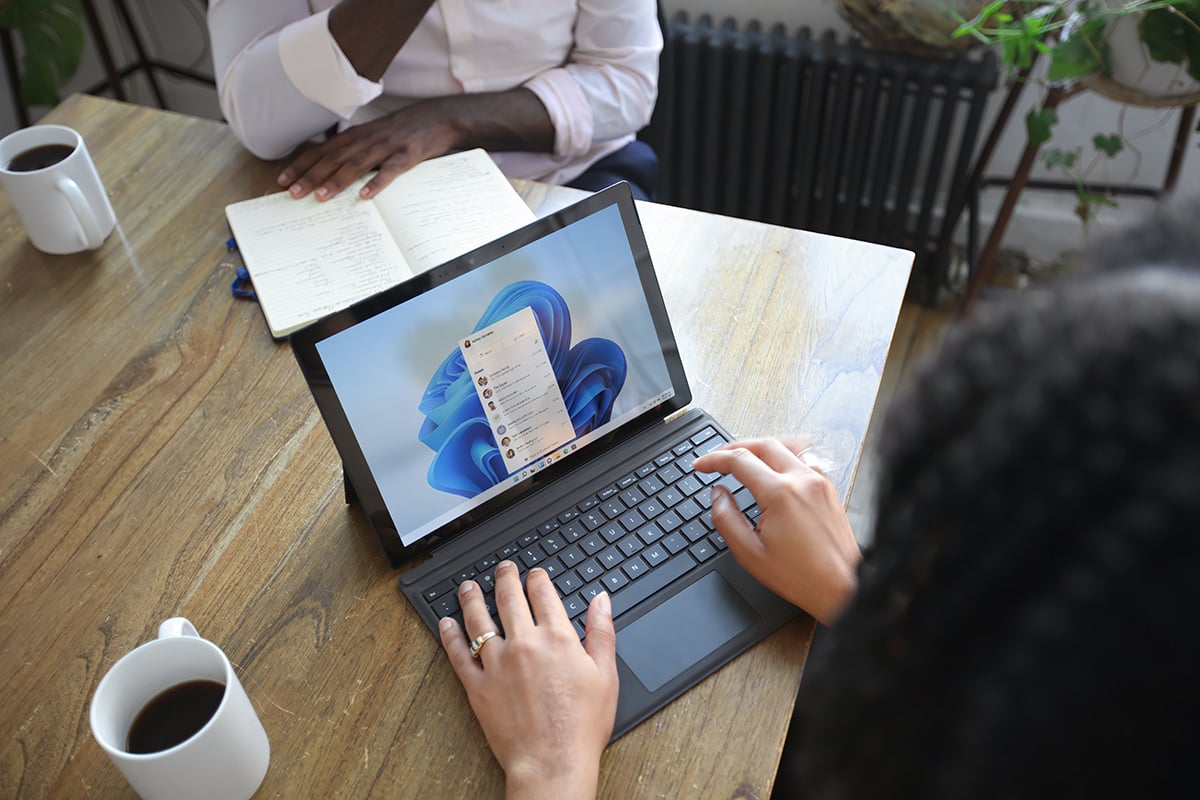The Steps in a Hardware Migration
Windows 10 goes End of Life (EOL) in October 2025. You may look at that date and immediately ignore the announcements because it is so far away. On average, an enterprise takes 18 months (about one and a half years) to complete a hardware refresh. How could swapping a few computers take that long? This blog will double as an essential checklist for those looking to upgrade their hardware and an argument for starting your migration now to ensure every device in your organization can run Windows 11 when October 2025 comes.

Identify Eligible Devices
As I said earlier, this long, and arduous process impacts every part of the business. Before figuring out the financials and proposing this to leadership/legal, you must identify how many devices would be impacted. If only 100 desktops out of 100,000 are ineligible for Windows 11, that is significantly less disruptive than a quarter of all devices needing to be replaced.
Calculate Estimated Financial Impact & Cost
Leadership will want to know how much a device refresh would cost. But the total cost is more than just however many devices you need. Depending on the company's size, you may need to hire contractors, fly IT leadership to each site, and account for needing more devices than planned initially. Then there is the cost of downtime when an employee transitions from one device to the new one, plus the cost of some core IT staff solely focusing on the project. Finally, you'll need to anticipate the cost of hardware destruction. However, you can also estimate the revenue from selling devices to employees. Once the hard drives are properly destroyed in accordance with compliance standards, you can make some money back by selling the devices internally.
The monetary impact is different than the cost. If you anticipate pushback due to the financials ("the computers work just fine, why would we buy all new ones?"), you can calculate the budgetary impact of operating on EOL non-compliant devices. The overall estimated cost of non-compliance is over $14 million between fees, business disruptions, and lawsuits. You are also running on older hardware which can cause productivity loss.
Gain Approval from Leadership and Stakeholders
Once you have presented your case and received approval from the leadership, you must get buy-in from department heads. After all, you will be slightly disrupting their workers when transitioning devices. Having them on your side can also help when you reach the device provisioning stage, and I'll explain why later. There will always be holdouts, but the more stakeholders are on board, the smoother the migration. Then, set aside time to ask what hardware specs their employees need. Data analysts may need an i9 processor, but QA can use i7 processors.

Order Devices
It is unlikely that you will be able to buy thousands of the same computer, due to supply chain issues or the unique demands of each department. You can work with your hardware vendor to order the necessary devices since you already know the minimum specs for each department or employee level. You must also ensure the devices meet compliance requirements and language and ADA requirements for employees. This is also important to remember when building computers.
Train Contractors
Now that the hardware has been ordered and you're waiting for devices to be shipped, it is an excellent time to find, vet, hire, and train contractors. Even if you're going through a firm to hire contractors, you will most likely need to do new hire paperwork. Once you have hired contractors, you can start training them to aid the deployment successfully, teaching them who gets what software package, how the built computers should look, how to interact with employees when facilitating the device swap, etc. Training the new employees in this stage allows for a quick turnaround when the hardware is delivered.
Schedule Travel
This may seem easy, but each trip to an office location requires you to work around PTO & holidays and allot extra time if something slows deployment.
Prepare Workforce
While you're hopefully in the cloud, your users still need to back everything up. Be sure to send out multiple communications alerting employees to the upcoming migration and remind them that every necessary file must be in their office cloud. There should be no locally hosted files sitting on their desktop.
Provision Devices
You've prepared all the personnel, and the devices finally arrived on-site. I suggest doing a baseline build of the machines to minimize the business impact. An excellent way to prepare for this is to sit back down with the business leaders once devices are ordered and run through what software they need. This would also be a great time to do a licensing workshop with Synergy Technical to understand better what you're using versus what you're paying for. Plus, you can save the company some money, which is always great during a considerable expense like a device refresh!
Complete the Swap
It's going time! All hands-on deck; getting this done quickly is critical. If the department heads are open to it, consider creating a schedule so that impacted employees can block their calendars to make the switch easier. Camp out in a conference room and start swapping. This is also time for a secondary check to ensure users get the right devices. Sure, you probably have a spreadsheet of exception cases, but when you're in the zone, it can be easy to forget about the users that need a different device. A few ways to ensure users get the necessary devices include labeling/naming each device or having exceptional cases go first. Ensuring that ADA or non-English speaking employees isn't just good practice; it is a compliance requirement.

Respond to Tickets
This and the train users point below this are interchangeable and likely are happening at the same time. Even though the devices are close to what the users already have, switching devices has many hiccups. Even if the migration is complete, you should still relieve the extra support. As users realize they didn't back an important file up, can't find the power button, external monitors aren't configuring, etc. Service tickets will double. And if you're doing this in a phased approach, most of the support staff will still be working on the rollout. So, make sure you have a few IT staff dedicated to tickets.
Train Users
As mentioned in the previous step, new devices will always bring challenges. You can make a video training series, offer voluntary training courses, or even make the training mandatory. While it will likely be simply a familiarization course, this will hopefully reduce the number of tickets you receive, lessening the long-term workload. This would also be an excellent time for one of our engagements like our Teams Engagement. It would remove the stress from your IT department to train and encourage your workforce to use Microsoft Teams.
De-Provision Old Devices
One last hidden cost! You will need to dispose of every hard drive properly. There are two ways to go about this – either have a certified company destroy the entire device and give you a certificate of destruction or pull out the hard drives yourself for the destruction company. Choosing the second option is more time-consuming, but it allows you to…
Dispose of Devices
Sell the old devices! This could be a fundraiser for your company's nonprofit of choice or a way to recoup some funds. If you choose this option, you'll have to draft a contract simply because you would be selling to many employees. You would be surprised how successful this option can be! It is also an opportunity for some free (money-making) positive press.
1,500 words and three pages later, this shows how complex and time-consuming a hardware migration can be. And this doesn't include steps, issues, or rules specific to your organization. October 2025 may seem like years away because it is, but a hardware migration can take over a year, depending on company size. Supply chain issues mean that computers take longer to be delivered. And I didn't even touch on the human aspect of this! Employees wanting to use this opportunity to get a device more powerful than their leader signed them up for, a device head saying no and throwing off your schedule, or legal needing to review every communication sent out.
Hardware migrations are a great time to reset. Do a Licensing Workshop to see what software isn't being used or where you're paying double. Do a Teams Enablement Workshop to help adoption rates. You could even do a Transformation Accelerator Workshop to completely revamp how users interact with each other and their devices. You can start from scratch and use it to your advantage!


Comments